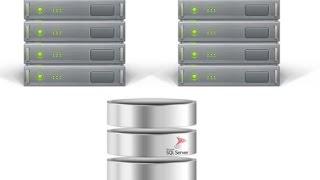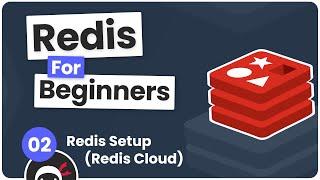
Installing a SQL Server Failover Clustered Instance
Комментарии:

Edwin this video is SHOW, congratulations about this technical profile and experience with SQL Server FC
Ответить
do you have a Database mirroring tutorial?
Ответить
Thank you for this very detailed and thorough explanation.
Ответить
Great explanation ! its was very clear
Ответить
Thanks for the video Edwin. Why would you want to create the tempdb in local drives? This is because you said during failover, it will be recreated in new server. Wouldn't all queries with temp tables lose their data when the secondary server is online?
Ответить
Thanks it is Wroth
Ответить
really nice explanation with all.
Ответить
Thank you!
Ответить
Great tutorial, thank you very much
Ответить
I really appreciate this video Edwin! Thanks so much.
Ответить
Thank you so much @Edwin great post!
if I want to configure the SQL Clustering on-premises on the physical server, are these steps work for that. ?!

wow thank you
Ответить
nice video however i guess for both windows and sql cluster we need private ip and not public ip
1 public for windows clustering
1 public for sql clustering

Super....
Ответить
Thank you Edwin. Exellent work. I have learned so much.
Ответить
thank you. it's a very good post
Ответить
Hello, I have a lab similar to yours but I have two questions. In my lab I have 3 networks, one for domain, other for iscsi and other for cluster ( i guess heartbeat). Why do u put the cluster on the same network of your public nodes? shouldn't be on the same network of the hearbeat?
The second question is, if I have a shared storage and the 2 node are getting data from it, when a failure occurs, the second node will have the same database information (tables and that) or its necessary to replicate ?
Thanks alot!

Thank you sir. I used your tutorial to validate/ install/configure SQL cluster on our environment. Great job.
Ответить
Indeed gr8 job
Ответить
Thank you so much, the presentation is easy to understand. do you have tutorial on active active and active passive nodes?
Ответить
Nice tutorial. If you have 30 instances in a cluster, how you configure the storage? if you are using drive letters it is not enough.
Ответить
Hats Off to you Sir..
Great Vid tut and Very Fine Explanation.

Very well explained. Thanks a lot for these trainings
Ответить
Really worth watching this video, I liked the way you explain and demonstrate, highly appreciable! When can you do us a favor by preparing similar for SQL Server 2016?
Ответить
I am new to SQL. may I know what is the difference between SQL agent service and the SQL Engine?
Ответить
Great work ! Edwin
Highly appreciated

thank you. ure my hero
Ответить
Excellent Presentation
Ответить
Really great work Edwin, to the point and concise.
Ответить
Great work!! If I do this method, can I manage the CPU and Memory allocation? I have 20 Core in one node, and I want to license it for 12 Core only. I want to use the server only with 125GB memory from 192GB. Can I install the SQL next to the Hyper-V VM-s on same node?
Ответить
Really great work Edwin. I enjoy it so much. Thanks a lot.
I am using windows server 2012 R2 Standard. The thing is i am unable to find the option "node and disk witness" or "node and file share witness". It only shows that current vote=1 for each node and disk witness/file share witness. There is nothing witness type "node and disk witness" or "not and file share witness". Is it because of my Windows version is Standard?

I rarely comment but this is excellent work. Setting up sql clustering is straightforward but managing it needs an in-depth understanding and this video answers a lot of points.
Ответить
what if I use FC instead of iSCI?
Ответить
SQL clustering / failover. I have query: 1) I need 4 SQL Server can access sing Data store and databases in replication mode. 4 SQL I can cluster togather (2 per site cross other 2 at other site under singe vcenter) but logically we define seperate site. I dont assigned luns but I have big 5TB Lun active/active mirroring and I am giving all VM 500GB each as D: drive partition volume from that 5TB Lun. All SQL VM have 500GB from same 5TB. so how I ensure that independent 500GB volumes each can be a part of SQL cluster and access same database if any of that server fails or crashed? any idea. If I can creat SQL_Lun1 2TB and that SQL_Lun1 give virtual RDM's volume to all SQL that will good idea but for that I have to make space and create lun, because I am asking question, I dont have more space to create luns, if I create luns I have to destroy lun and recreate space. But if any idea or technique to do volume partition to partition clustering than that helps. Any idea.
Ответить
Great tutorial!
Ответить
Hi, excellent video tutorial but I have a question: who admin or controls the cluster? ( sql or windows)
Thanks, regards.

Thanks for great sharing. Your explanation was great and detail!
Ответить
Hi. If we have two named instances in a active-passive cluster, can I send one of the instances to the passive node, while the other remains on the first one?
Ответить
OMG! Thank you so much! You are a life-saver!
Ответить
Really Nice Tutorial!!! Thanks
Ответить
Really nice! thank you for your effort in doing this! we all appreciate it
Ответить
Thanks a TON. Very useful video.
Ответить
Thank for this video i have learnt a lot from, not only this video but from your videos
Ответить
Awesome VideoTutorial!!!
Ответить
Great presentation !!
Waiting for Geo-Clusters demo ..


























